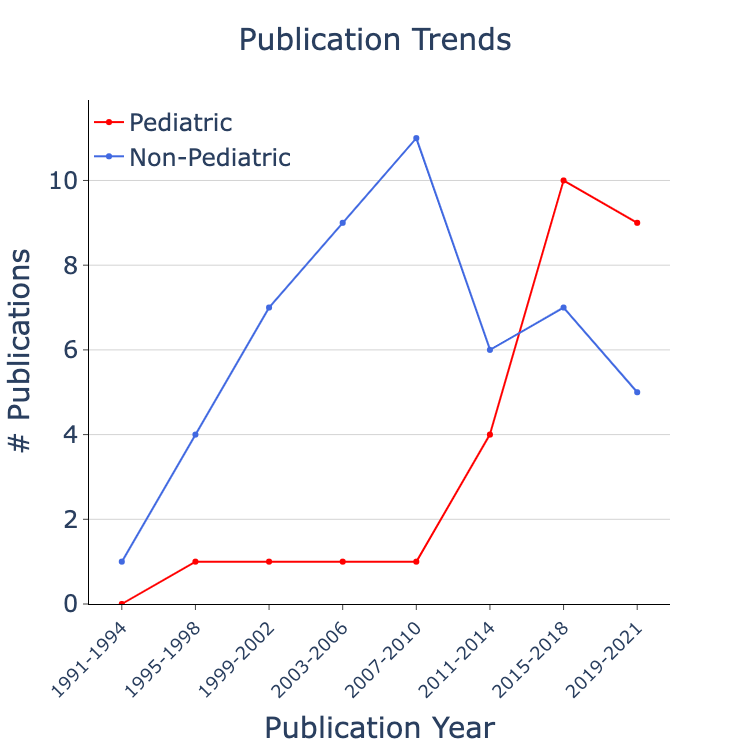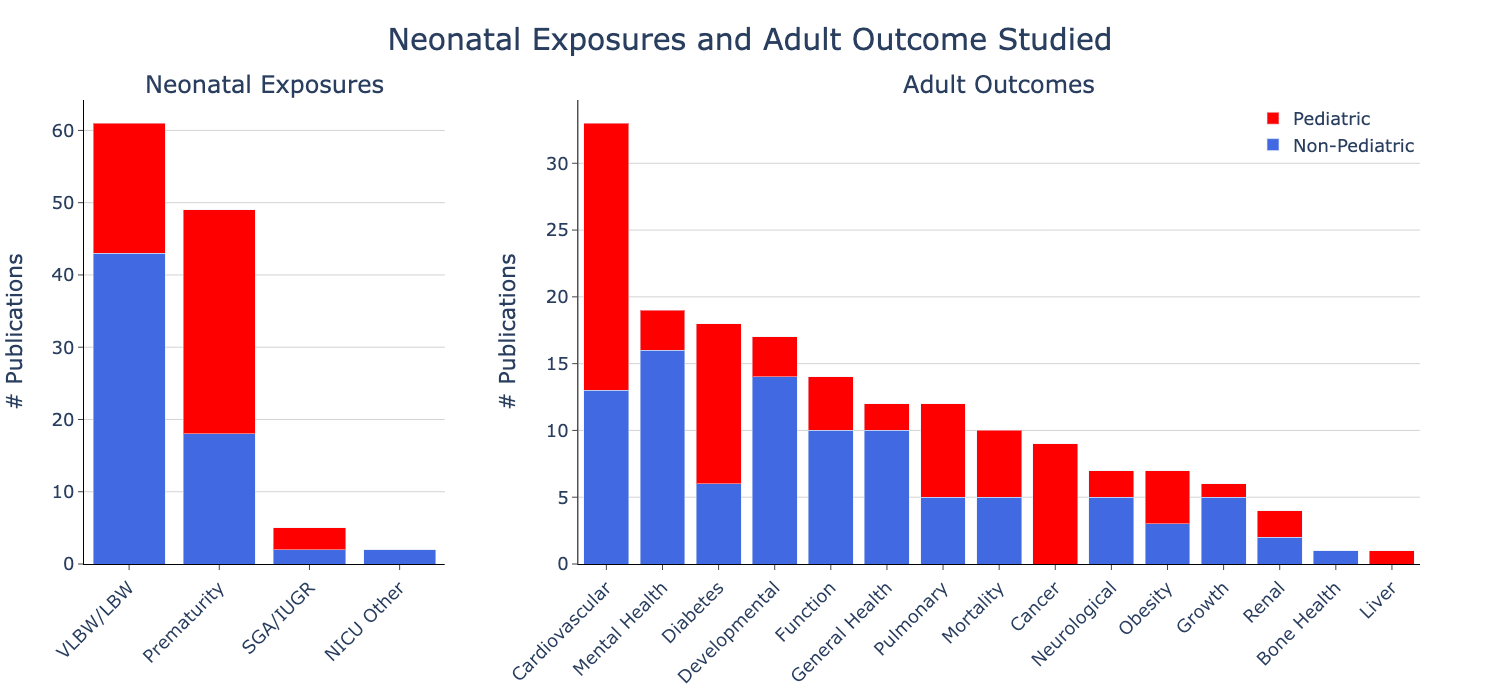Health Services Research
Session: Health Services Research 3: Access
228 - Gaps in the Publication of Adult Outcomes for Patients with a Complex Neonatal History: A Bibliometric Analysis
Sunday, May 5, 2024
3:30 PM - 6:00 PM ET
Poster Number: 228
Publication Number: 228.1810
Publication Number: 228.1810
- LH
Laura C. Hart, MD, MPH (she/her/hers)
Assistant Professor
Nationwide Children's Hospital
Columbus, Ohio, United States
Presenting Author(s)
Background: The fetal origins of adult diseases (FOAD) hypothesis links fetal and neonatal exposures to a variety of adult outcomes. Because the exposures in FOAD are of interest to neonatologists, but the outcomes are of greatest interest to non-pediatric providers, research and dissemination may serve the needs of one group but not the other. It is not known if current publication practices related to FOAD meet the needs of clinicians caring for survivors of complex fetal and neonatal exposures.
Objective: To understand gaps in the neonatal exposures studied, reported adult outcomes, and secular trends in publications among narrative and systematic reviews published regarding adult outcomes of patients with a complex neonatal history.
Design/Methods: We searched MEDLINE, EMBASE, CINAHL, PsychINFO, and Cochrane in January 2022 for relevant publications. The literature search was supplemented by a hand search of the references of included studies. Studies were assessed by two authors at both the title/abstract and full text stages. Data regarding year of publication, journal of publication (classified as Pediatric vs. Non-pediatric), fetal/neonatal exposure, and adult outcomes assessed were extracted by one author and verified by a second. Adult outcomes were categorized into clinically relevant categories. Counts of publication per exposure, outcome, and journal type were calculated and visualized, accounting for the possibility of multiple exposures or outcomes in any single publication.
Results: A total of 89 narrative and systematic reviews met inclusion criteria. Initially, reviews tended to be published in non-pediatric journals, but have shifted to publication in pediatric journals over the last decade (Fig. 1). Most reviews focused on prematurity and/or low birth weight (86/89; Fig. 2). The most common adult outcome of interest was cardiovascular (33/89; Fig. 2). None of the reviews focused on those with a history of substance exposure in utero. Notable gaps in adult outcomes assessed included a lack of study of auto-immune conditions, endocrine conditions outside of diabetes and bone health, and gynecologic outcomes.
Conclusion(s): This bibliometric analysis of the published reviews assessing adult outcomes of those with a complex neonatal history identified several gaps, including a preference for publication in the pediatric literature in recent years, a lack of data on those with a history of substance exposure in utero, and a lack of data in certain adult outcomes. Future work in this area should consider addressing these gaps.


